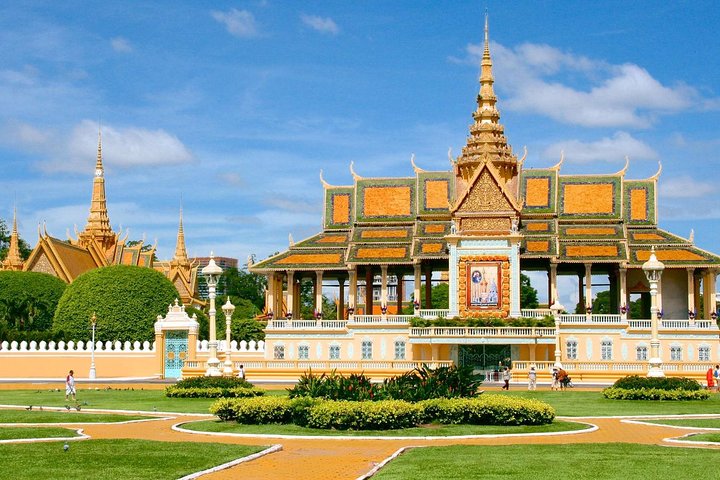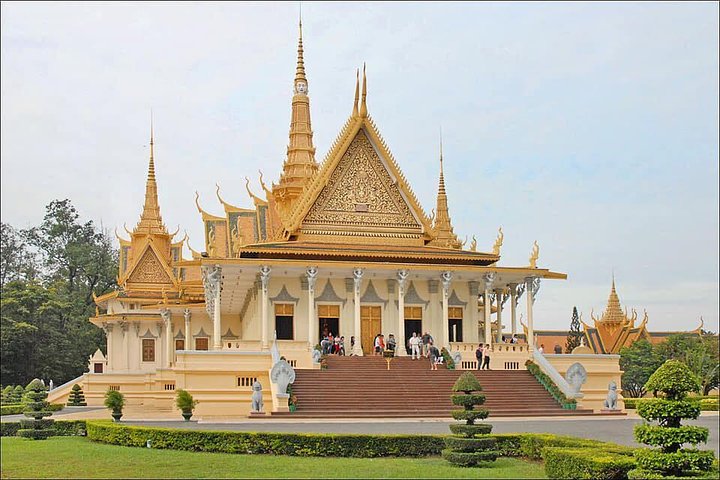Exploring the Cultural Heart of Phnom Penh: A Journey Through Time
Embark on a journey through Phnom Penh’s cultural heart, exploring the grandeur of the Royal Palace, the artistic treasures of the National Museum, and the poignant history of Tuol Sleng. Discover the stories that shape Cambodia’s identity.
A Royal Welcome
As I stepped into the Royal Palace complex in Phnom Penh, I was immediately enveloped by a sense of grandeur and history. The palace, with its golden spires and intricate architecture, stands as a testament to Cambodia’s rich cultural heritage. Walking through the grounds, I couldn’t help but reflect on the stories these walls could tell, from the reign of King Norodom to the present day. The palace is not just a residence for the royal family; it is a symbol of the nation’s resilience and pride.
The Silver Pagoda, located within the palace grounds, was a highlight of my visit. Its floor, covered with over 5,000 silver tiles, glistened under the soft light, creating an ethereal atmosphere. The Emerald Buddha, a revered icon, sat majestically, drawing visitors into a moment of quiet reflection. As someone deeply interested in cultural traditions, I found myself captivated by the intricate details and the spiritual significance of this sacred space.
A Journey Through Time
Leaving the Royal Palace, I made my way to the National Museum, a treasure trove of Cambodia’s artistic legacy. The museum’s architecture, with its traditional Khmer design, is a work of art in itself. Inside, I was greeted by an impressive collection of sculptures from the Angkor period, each piece telling a story of a bygone era.
The sandstone sculptures, with their intricate carvings and expressive forms, transported me back to the time of the Khmer Empire. As I wandered through the galleries, I was struck by the skill and creativity of the artisans who crafted these masterpieces. The museum’s courtyard, a serene oasis amidst the bustling city, provided a perfect spot for contemplation. Surrounded by lush greenery and the gentle sound of water, I took a moment to appreciate the beauty and complexity of Cambodia’s cultural heritage.
Reflections on History
My journey continued to Wat Phnom, a sacred hilltop pagoda that offers a glimpse into the spiritual heart of Phnom Penh. According to legend, the pagoda was founded by a woman named Penh, who discovered four Buddha statues in the Mekong River. Climbing the grand eastern staircase, flanked by lions and naga balustrades, I felt a sense of reverence and awe.
The final stop on my cultural exploration was the Tuol Sleng Genocide Museum, a stark reminder of Cambodia’s turbulent past. Once a high school, this site was transformed into a center of horror during the Khmer Rouge regime. Walking through the haunting corridors, I was confronted with the harsh realities of history. The museum serves as a powerful testament to the resilience of the Cambodian people and their commitment to remembering and honoring those who suffered.
This journey through Phnom Penh’s highlights was a profound experience, offering a deeper understanding of Cambodia’s rich cultural tapestry. From the opulence of the Royal Palace to the somber reflections at Tuol Sleng, each site provided a unique perspective on the nation’s history and identity. I left with a renewed appreciation for the enduring spirit of Cambodia and its people.















































